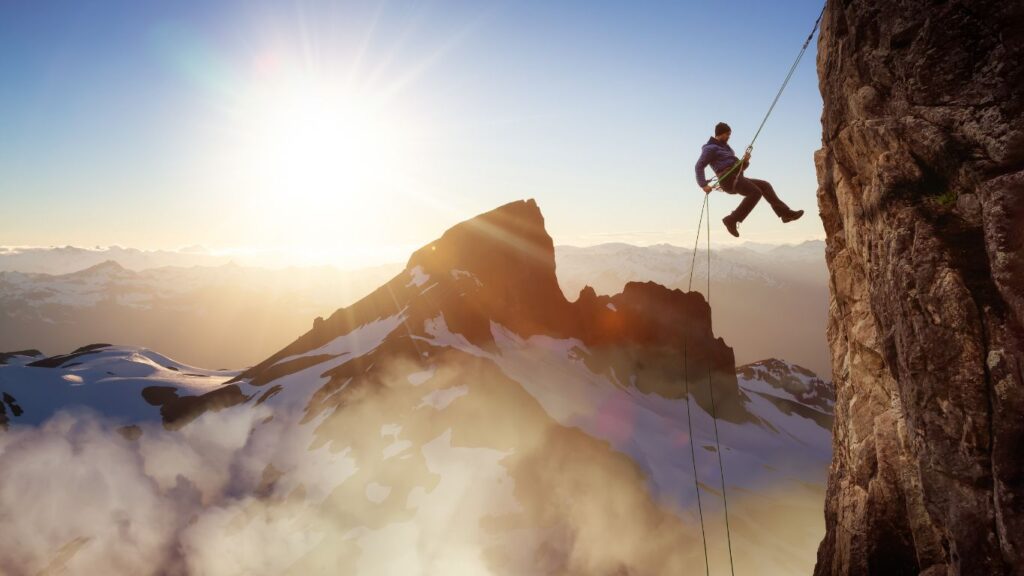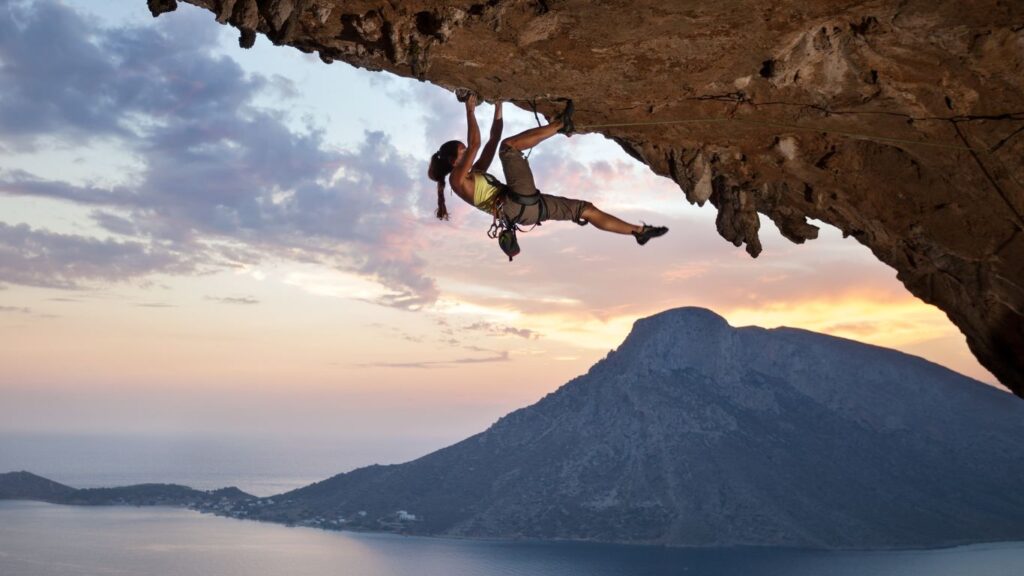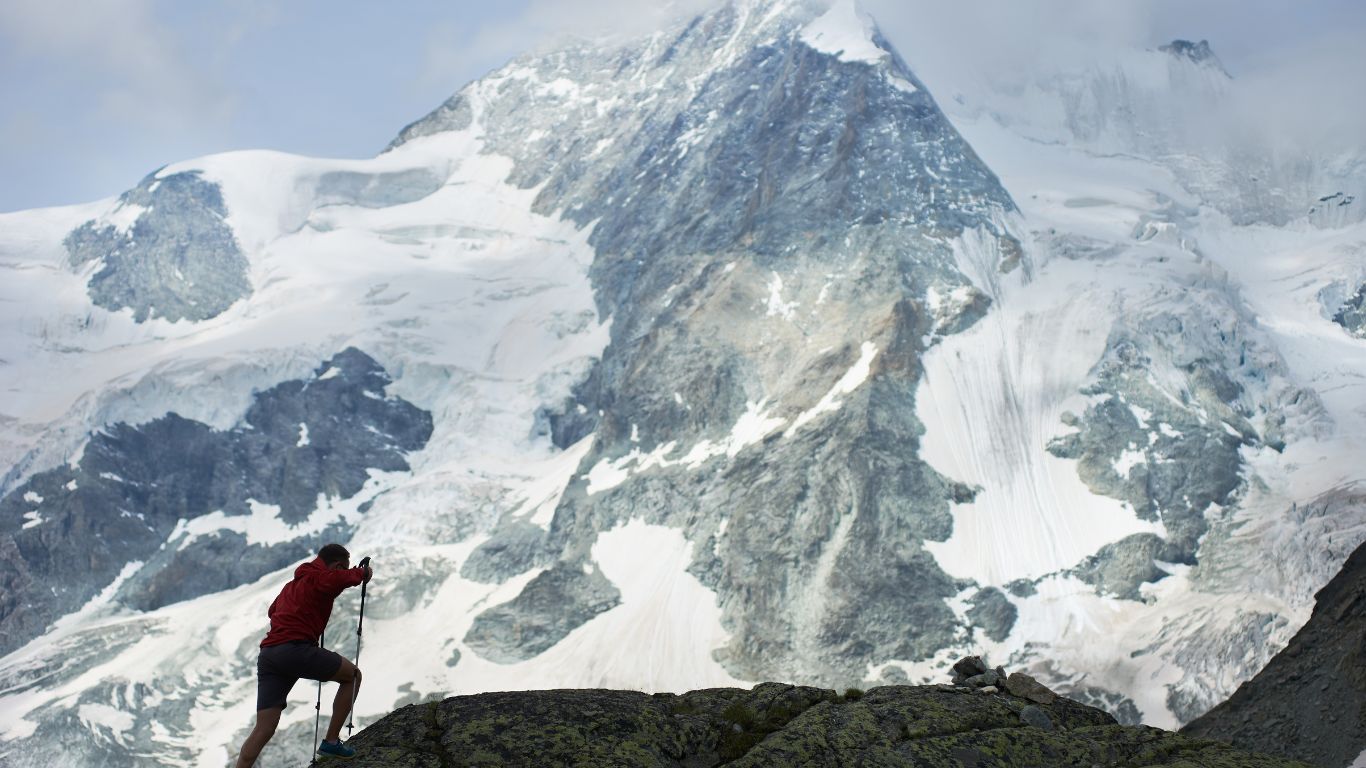Mountain climbing combines the thrill of exploration with the challenge of overcoming nature’s most imposing obstacles. Whether you’re a beginner eager to scale your first peak or an intermediate climber looking to refine your skills, understanding the essentials of climbing techniques, gear, and safety precautions is crucial for a successful and enjoyable adventure.
Climbing Techniques to Master
Belaying
Belaying controls the rope during a climb, ensuring the climber’s safety. Proper belaying technique prevents falls and manages the rope slack and tension. Beginners should learn belaying under the guidance of an experienced climber or through certified climbing courses.
Smearing

Smearing is a foot technique used when there are no clear foot holds. By pressing the sole of the climbing shoe against the rock with as much surface area as possible, climbers can create friction that allows them to ascend or traverse a section. This technique is beneficial on slabs or smooth surfaces.
Essential Gear Recommendations
Climbing Harness
A well-fitted harness is essential for safety during belaying and rappelling. Ensure your harness is comfortable and properly adjusted to your size.
Rope
Invest in a high-quality dynamic climbing rope that matches your climbing plans. Rope length and diameter should be chosen based on the specific requirements of your climbing routes.
Climbing Shoes
Choose snug-fitting shoes that offer a good balance of grip and support. The right shoes can significantly improve your ability to use foot holds effectively.
Helmet
A helmet is a non-negotiable safety item to protect against falling rocks and other head injuries. Always wear a helmet, regardless of the route’s perceived difficulty.
Belay Device and Carabiners
A reliable belay device and carabiners are essential for safe belaying and rappelling. Please familiarize yourself with their proper use and maintenance.
Quickdraws
Quickdraws connect the climbing rope to bolt anchors or protection devices on the route. They are essential for sport climbing and traditional routes.
Chalk Bag and Chalk
Chalk improves grip by keeping your hands dry. A chalk bag worn on your harness allows easy access during a climb.
Nut Tool and Camming Devices
For traditional climbing, a selection of nut tools and camming devices are used to place and remove protection as one ascends.
Anchor Equipment
Building safe and secure anchors is crucial for multi-pitch climbing and rappelling. This includes knowledge of slings, ropes, and proper anchor techniques.
Key Safety Precautions
Safety should always be your top priority when mountain climbing. Here are some essential safety tips:

- Check Your Gear: Inspect your gear for wear or damage before each climb. This includes your harness, rope, helmet, and any protection devices you use.
- Belay Safely: Always belay with a partner and use proper belaying techniques. Keep communication clear and consistent throughout the climb.
- Route Inspection: Before climbing, assess the route for potential hazards. This can include loose rock, unstable surfaces, or areas prone to falling debris.
- Weather Awareness: Be mindful of the weather forecast and avoid climbing in adverse conditions. Sudden weather changes can increase the risk of accidents.
- Stay Hydrated and Nourished: Proper hydration and nutrition are vital for maintaining focus and energy during a climb.
- First-Aid Preparedness: Carry a basic first-aid kit and know how to use it. Familiarize yourself with basic wilderness first-aid practices.
- Leave No Trace: Respect the natural environment by practicing leave-no-trace principles. This helps preserve the mountain’s beauty and integrity for future climbers.
- Emergency Plan: Inform someone of your climbing itinerary, including the expected return time. Carry a means of communication for emergencies.
Mountain climbing is a rewarding sport with breathtaking views and a sense of accomplishment. You can enjoy the mountains safely and responsibly by mastering essential climbing techniques, investing in the right gear, and adhering to safety precautions. Remember, the mountain will always be there another day; prioritize safety above all else to ensure many more climbing adventures to come.










